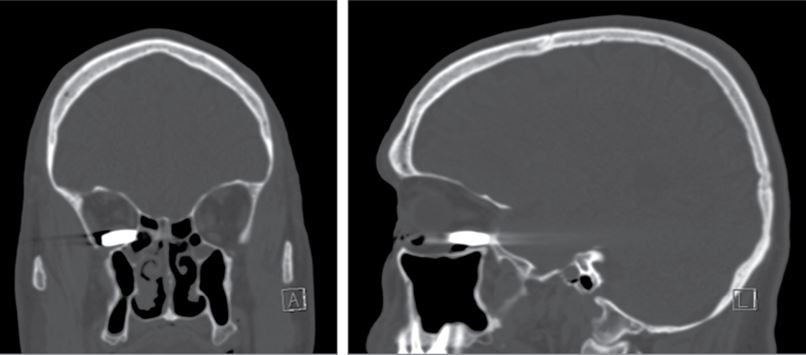Don't Blink: Striking Image Shows Bullet in Man's Eye Socket

A striking new image shows a bullet lodged in a man's eye socket.
The 45-year-old man went to the emergency room after he was shot with a 0.22 caliber pistol, according to a new report of the case, published today (Nov. 30) in the journal JAMA Ophthalmology. The bullet went through a wooden door before entering the man's right eye.
The bullet came to rest in the man's eye socket, right up against a muscle that controls eye movement. It did not fracture his skull, the report said.
The man was in severe pain, and doctors could see an entry wound for the bullet in the corner of the man's eye. There was damage to ducts in the eyelid through which tears drain. ['Eye' Can't Look: 9 Eyeball Injuries That Will Make You Squirm]
The man had surgery to remove the bullet and repair the damage to the tear ducts. Afterwards, the man's pain improved rapidly, and his vision wasn't affected by the bullet, the report said.
If a bullet enters the eye socket, it often results in significant destruction of the socket, sinuses and brain, the report's authors noted. But in this case, the man experienced only limited damage to his eye socket because the bullet passed through a door first, which slowed it down, they said.
Original article on Live Science.
Get the world’s most fascinating discoveries delivered straight to your inbox.

Rachael is a Live Science contributor, and was a former channel editor and senior writer for Live Science between 2010 and 2022. She has a master's degree in journalism from New York University's Science, Health and Environmental Reporting Program. She also holds a B.S. in molecular biology and an M.S. in biology from the University of California, San Diego. Her work has appeared in Scienceline, The Washington Post and Scientific American.



